Masrur temple also known as Rock-cut temple located on the road, linking Nagrota Surian and Lunj towns of Kangra District, and is one of the popular archeological sites in India. The temple was built in the early 8th century A.D. The temple complex is a cluster of 15 small rocks, that is carved out of a single rock. It is believed that Lord Shiva had set foot on this sacred land and is worshiped here as the main deity, although, the main shrine is dedicated to Lord Rama (an incarnation of Vishnu), his devout wife Sita and his righteous brother Lakshmana. The temple is facing towards the mighty Dhauladhar Himalayan Range, with a sacred pool of water in front, adding to the beauty of the temple. It is believed that the Pandavas spent a long period of time in this temple during the period of their exile.
Location
Masrur temple, the beautiful archeological site is located on the link-road between Nagrota Surian and Lunj towns, which is about 32 Kilometers west of Kangra and 47 Km from Dharamshala. It is located at a height of about 2500 feet above sea level and is built on the top of a natural rocky hill. The place is reachable by bus, car, train as well as flight. The best medium to reach the place is the famous HRTC bus services from Kangra to Masrur or by hiring a cab. The nearest broad gauge railway station is Pathankot. From Pathankot, one may take a narrow-gauge train to reach Nagrota Surian, which is the nearest railway station. The nearest airport is the Gaggal airport, having frequent flights from Delhi and Chandigarh. From both, the railway station as well as the airport, one has to hire a cab or take a bus to Masrur.
History
It is said that the temple was built by a passionate devotee of Lord Shiva, Raja Yashoverdhan, although, the exact date is not known. The figure of Lord Shiva in the very entrance signifies that originally the temple was dedicated to Mahadeva. The temple complex was discovered in the year 1875, but in 1905, it was heavily damaged by a massive earthquake, which shook the entire region of Kangra valley. In 1913, the Archeological Survey of India considered the temple as the heritage site because of its unique architectural and aesthetical values. According to a local legend, it is believed that the Pandavas of Mahabharata lived here during their exile period and built the temple. However, they had to leave the place out of the fear of their identity getting exposed, leaving the construction of the temple incomplete.
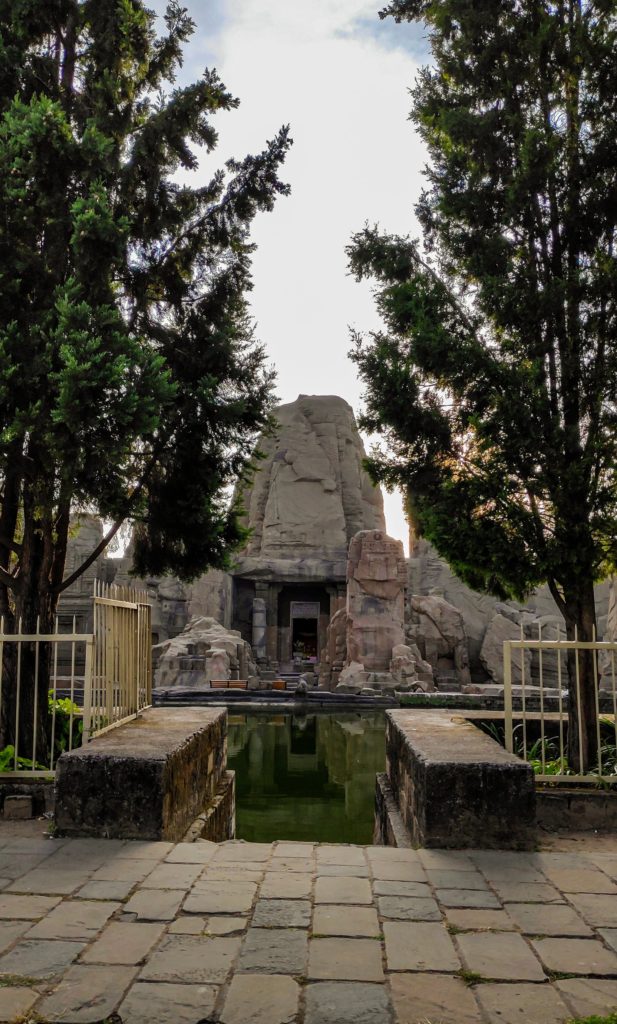
Architect
The temple is made up of the natural sandstone rock and is an adaptation of the North Indian Nagara style. The temple complex consists of 15 monolithic rock-cut shrines, out of which, 14 are cut from outside and the one, which is the central shrine, also known as Thakurwada, is cut from the inside. However, because of the devastating earthquake of 1905, only a few of the shrines are left now.
The wall of each shrine is beautifully carved out and consists of many figures of Gods and Goddesses such as Shiva, Devi Parvati, Vishnu, Lakshmi, Sarasvati, and so on. The elevated towers of the temple are engraved with tri-faced Shiva showing different aspects of mood. The walls are also carved out with many floral designs, sun, and fire. Although, the inside walls of the shrines are empty.
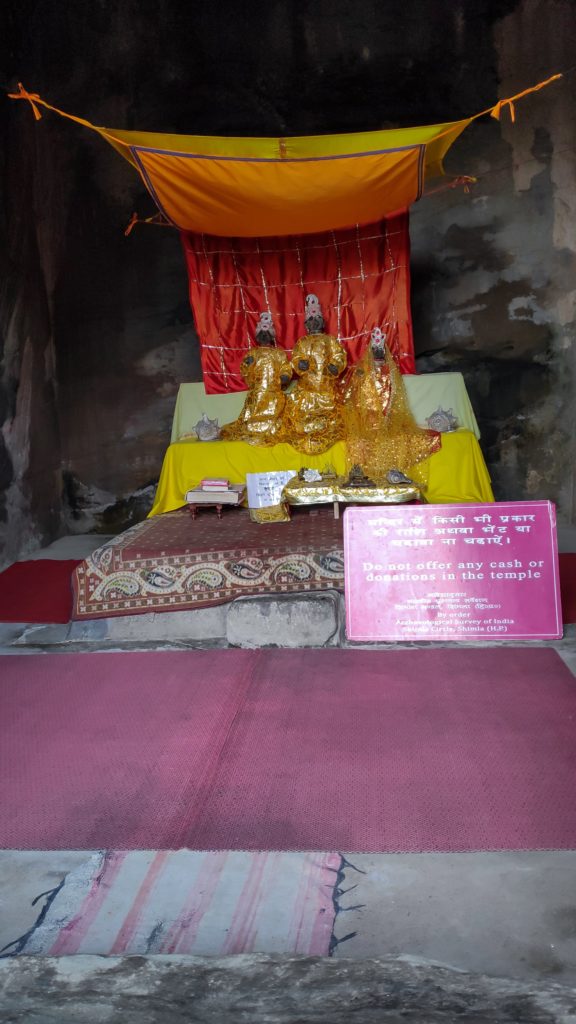
The temple complex is facing the mighty Dhauladhar Mountain Range in the North-East direction. The idols of Lord Rama, Sita, and Lakshamana, are kept inside the main shrine and are worshipped by the people. There is a rectangular pool of sacred water in front of the temple complex. The water in the pool reflects the image of the magnificent temple, which makes the place even more attractive.
Check out the 14 Temples of Kangra District
Masrur temple is the only Rock-cut temple in the Northern part of India and is also known as the Ellora of Himachal or the Himalayan Pyramid. The style of Masrur temple has a similarity to the style of Kailashnath temple of Ellora in Maharashtra and Mahabalipuram in Tamil Nadu. The majestic beauty of the temple is a famous attraction for tourists, archeologists, and history lovers.

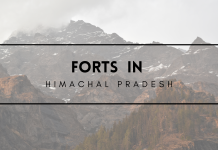


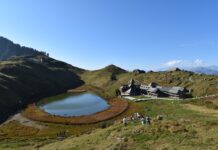







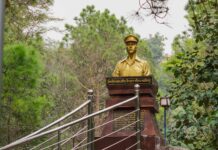
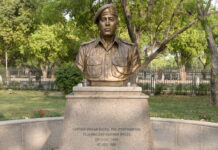


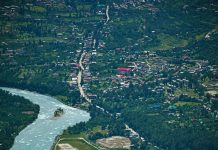
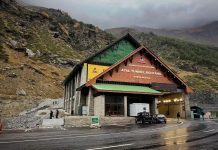

![Himachal Day: Read All About Himachal Pradesh day [15 April] Himachal Pradesh Day - BeingPahadia](https://www.beingpahadia.com/wp-content/uploads/2025/02/Himachal-Pradesh-Day-BeingPahadia-218x150.png)




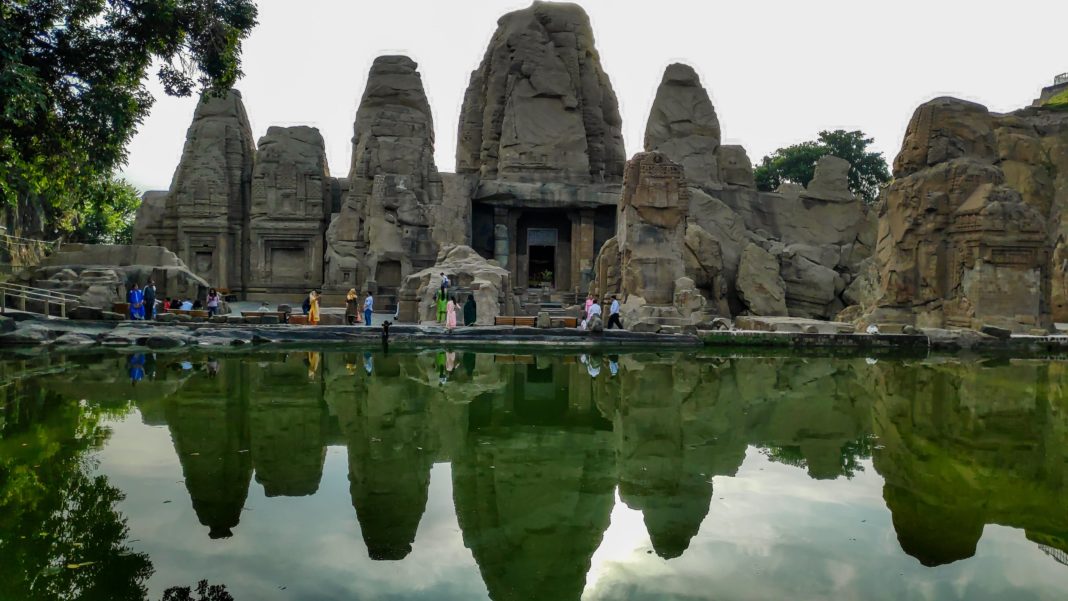
![Sidh Baba Balak Nath Shahtalai Temple in Deotsidh [Guide] Baba Balak Nath Temple Deotsidh](https://www.beingpahadia.com/wp-content/uploads/2023/04/Baba-Balak-Nath-Temple-Deotsidh-e1681616986690-100x70.jpg)

